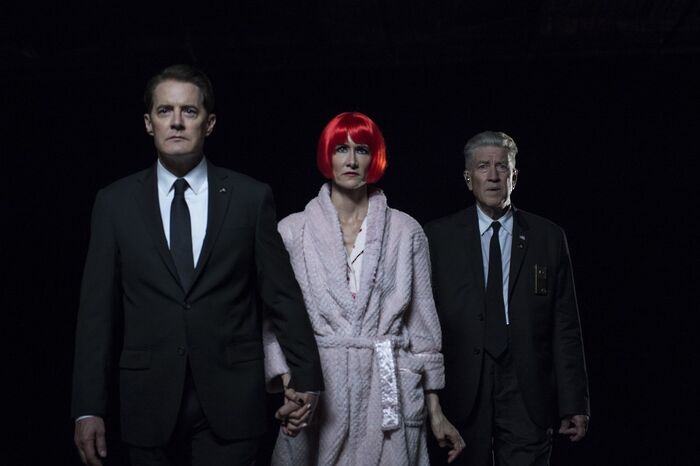Questioning the climax: love and loss in Twin Peaks
Just over 25 years since David Lynch left Peakies on a devastating cliffhanger, Reuben Andrews finds much to be admired in the director’s daring decision to do the same again in the climax of the show’s return
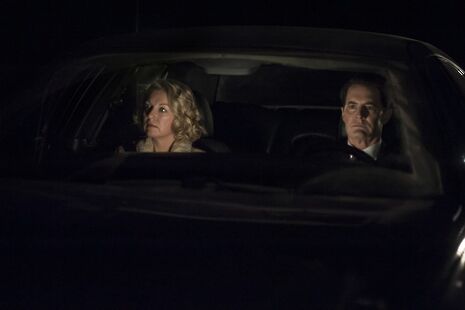

Mid-way through Twin Peaks: The Return, lead actor Kyle MacLachlan assured audiences that “It will all make sense in the end.” Months later, in the wake of the finale, he is decidedly less sure, stating “The ending is – I’m still – I’m still processing that, to be honest.” So which is it? Does it make sense or not? To answer that, we have to go back to the start.
Twin Peaks’s production history is almost as tangled as its surreal plot. Corporate meddling in the original run forced showrunners Mark Frost and David Lynch to reveal Laura’s killer mid-way through season two, against their wish to keep her mystery pulsating forever. Predictably, public interest waned and the studio prepared to pull the plug. But for a pair who had the gall to close the first season with a frankly farcical number of cliff-hangers in order to wrangle another season, the knowledge of impending cancellation was precisely the impetus they needed to produce one of the most influential hours of television ever.
“To transcend and alter an artistic landscape once is something very few artists manage; to do it a second time is, frankly, incredible.”
To this day, Dale Cooper’s strobe-lit stroll through the Native American nightmare realm of the ‘Black Lodge’ in search of imperilled love-interest Annie Blackburn remains cinematically transgressive. But what cemented this finale in cultural history was how it ended: TV’s most affable detective is replaced by a doppelgänger possessed by the same malignant spirit responsible for killing Laura Palmer at the start of the show. His friends are none the wiser, and as he stands adjusting to his new body in Cooper’s adorable blue pyjamas, he suddenly smashes his head into a mirror, laughing maniacally and repeatedly asking the audience “How’s Annie?”.
Not only did the final hour introduce multiple facets to the show’s mythology which it then refused to elaborate upon, but it wilfully let the antagonist win. And when Lynch returned alone, due to creative differences with Frost, to create the feature-length Fire Walk with Me a year later, he confounded people’s expectations further by having it be a prequel concerning the lead up to Laura’s murder, with only passing references to the original. Thus the horrific implications of the finale were left hanging.
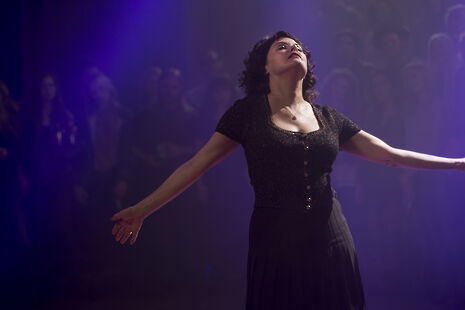
That is, until this year. The Return was billed as “pure heroin Lynch”, with new studio Showtime proud of their lack of interference. What followed was an eighteen-hour movie, broken over four months, which salvaged the burning wreck that ABC executives left Twin Peaks as back in 1991. Yet perhaps the most perplexing thing about The Return has been how, once again, the finale has shattered conventions. To transcend and alter an artistic landscape once is something very few artists manage; to do it a second time is, frankly, incredible.
Almost all plotlines are ignored, including the fate of fan-favourite Audrey Horne, in a bizarre two-hour closer, where Cooper destroys his doppelgänger, prevents Laura’s murder from ever happening, and gets trapped in a parallel universe where none of Twin Peaks, not even himself or Laura, remember themselves fully. 1991’s unanswered “How’s Annie?” is echoed in 2017’s chilling “What year is this?”. Once again Cooper has squared up against the forces of evil, and once again he has lost. Only this time, he appears to have written himself and Laura out of existence.
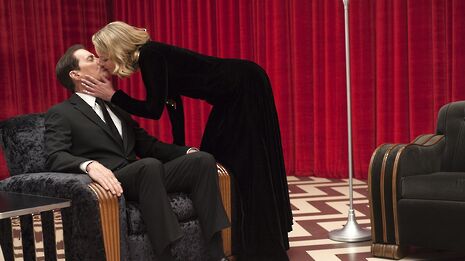
Some fans are disappointed: much of this series saw Cooper in a walking coma, and he was only truly himself for a few scenes. Beloved characters were cast aside for new ones, and the ending was every bit as elliptical as before. Make no mistake though, Frost and Lynch are not being sadistic. Instead they are slowly mining to the core of what Twin Peaks is.
It is easy to feel as though this series is wrong in some sense, since it barely resembles the original. But this is a confused chronology. That run was never really theirs due to meddling executives. Frost and Lynch were in complete control this time – it was the true peaks.
And that is what made this series so clever. They know our misconceptions. They have had 25 years to rue the bastardisation of their child, to probe the warpings, the mistakes. They understand. And they are not afraid to transform both audience and their expectations into part of the narrative. One feels their loss, their frustration at having the original ruined for them. But this is not, as spoilt fans have suggested, mere ‘trolling’. The loss of the Twin Peaks that once was is elevated to be mimetic of loss itself: life, generations, people, places. All things end, and expecting to return to what once was as if nothing has changed is unrealistic.
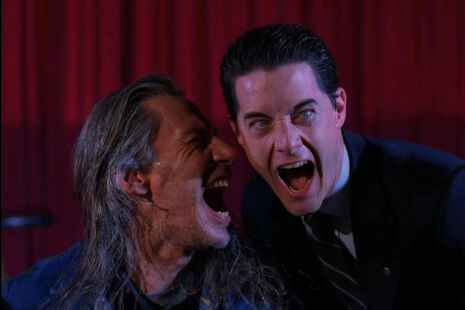
The truth is, an artist does not owe their audience anything: art that panders is inert, pointless. A few cheap thrills and it is over. No – the world is changing, and in order for art to reflect that, and change a viewer through it, it needs to upset, confound, and frustrate. All of these are colours of the artist’s palette rejected in a contemporary media world that chases profits and easy ratings.
The ending is wide open to narrative theories, the number of which is certainly in the hundreds already. Fans have been quick to scour Frost’s sci-fi-heavy novel, The Secret History of Twin Peaks, for clues, but with executive producer Sabrina Sutherland recently confirming that Lynch has never read the book, it seems unlikely it will unearth much. While it must have influenced The Return somehow since Frost co-wrote it, exactly how it did will remain another forever-buried strand of the tangled web of creative forces behind Twin Peaks.
However, to distil The Return to its thematic essence for a second: it is concluded with Cooper, having tried to erase Laura’s trauma, once again trapped. The show ends on her iconic scream as a reminder that grief cannot be scrubbed out, or bullied, only endured. Of course, that is just one interpretation, of which there are many. But it is especially poignant to me.
The reason this article started with the show’s long and tortuous history is to make the following point: Twin Peaks has always been a collective vision, a shared fantasy. From Lynch’s obsession with Laura’s peril, Frost’s sci-fi tendencies, the fans’ adoration of the quirky town, even ABC’s maligned views regarding the original run’s mystery. This is not the work of a singular mind, though Lynch’s influence has exerted most dominance on it. And the audience are undeniably a part of that vision—this season in its deliberate confounding of expectations was acknowledgement of that.
So perhaps it was cheeky of MacLachlan to say it would “all” make sense in the end—but his recent comment that he is still processing the ending is telling. Twin Peaks is over now, probably for good, and the pieces are all there. Whether or not one finds closure depends on the decision to search for it, and accept that sometimes the people and places one loves do not turn out the way one wants them to
 News / Clare Hall spent over £500k opposing busway 24 December 2025
News / Clare Hall spent over £500k opposing busway 24 December 2025 News / Caius mourns its tree-mendous loss23 December 2025
News / Caius mourns its tree-mendous loss23 December 2025 Comment / The ‘class’ of Cambridge24 December 2025
Comment / The ‘class’ of Cambridge24 December 2025 Comment / Yes, I’m brown – but I have more important things to say22 December 2025
Comment / Yes, I’m brown – but I have more important things to say22 December 2025 Interviews / Politics, your own way: Tilly Middlehurst on speaking out21 December 2025
Interviews / Politics, your own way: Tilly Middlehurst on speaking out21 December 2025

